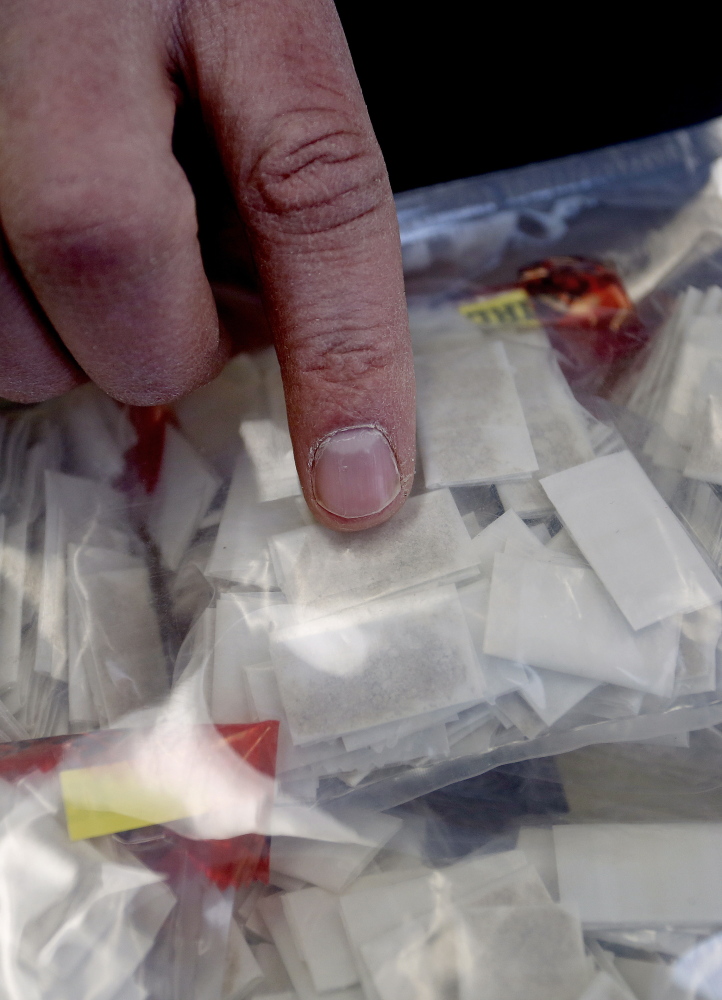MANCHESTER — Maine’s media reminds us regularly of the toll that substance use disorders are taking on our state. Barely a day goes by that we don’t hear of another overdose death, an infant born with neonatal abstinence syndrome, a high-profile arrest of another drug trafficker or the busting of another meth lab.
As a primary care physician, I see the negative impact of substance abuse, not only on my own patients but also on their families and the community.
SOME HISTORY OF THE PROBLEM
To understand how we got to this point, we need some history. Opiate addiction has been with us for centuries but became especially common in the United States in the late 19th century, when newer opiates were commonly available for a variety of symptoms.
Efforts to restrict opiates to limited prescription use reduced medically caused addiction, but then 20 years ago, two significant events encouraged physicians to significantly increase their prescribing of opiates:
• The emphasis on managing pain as the “fifth vital sign” by the Joint Commission (then known as the Joint Commission on the Accreditation of Health Care Organizations, an influential hospital credentialing authority).
• The introduction of powerful extended-release painkilling medications such as OxyContin.
Despite statements to the contrary by agents of the manufacturers (one company later paid a record $635 million fine for misrepresenting the product), these pills were significantly abused and led to diversion and addiction across Maine and in many rural states. Unfortunately, the result has been nothing short of horrendous.
Thousands of patients who received opioid-based drugs through legitimate prescriptions eventually became addicted and then, when the medical culture began to change and such prescriptions were harder to obtain, moved on to heroin.
Heroin is infinitely more dangerous, partly because its strength and purity are not assured. Many of the recent accidental overdose deaths have been the result of victims unknowingly injecting heroin laced with fentanyl, a dangerous combination.
STEPS WE CAN TAKE
What can we do? A lot.
• First of all, individuals suffering from substance use disorders deserve our compassion, empathy and respect. This disorder is a chronic disease and should be treated as such.
These patients will struggle with the illness for the rest of their lives. Stigma about drug abuse is one of the biggest challenges to both addiction treatment and overdose prevention.
• Secondly, more state and federal resources need to be dedicated to both treatment and prevention.
While the hiring of more drug enforcement agents, as proposed by Gov. LePage, may have an impact on the supply of heroin coming into the state, other drugs will replace it as long as the demand is there. This problem requires a comprehensive approach.
Fortunately, several initiatives are intended to address the problem.
The recent establishment of three task forces focusing on treatment, law enforcement and prevention and harm reduction has brought together dozens of volunteers dedicated to finding solutions.
These task forces were established by and have the support of Attorney General Janet Mills, Public Safety Commissioner John Morris and Thomas Delahanty, U.S. Attorney for the District of Maine. Legislative leaders have stated that the second session of the 127th Legislature will focus on the opioid-heroin problem. The problem is now getting the attention it deserves.
SUPPORT MORE TREATMENT, FACILITIES
But options for treatment are limited, with waiting lists for in-state resources and with many individuals having to leave the state for treatment. We encourage legislation to financially support primary care addiction treatment and addiction treatment facilities in addition to supporting the hiring of more drug enforcement agents.
The medical community owns part of this problem and has been advocating for reform for the last decade. Our advocacy has contributed to the creation of the state’s Prescription Monitoring Program, an “academic detailing” educational service and educational programming aimed at changing the practices of prescribers.
More needs to be done. The problem was created over a long period of time, and the culture of both patients and prescribers won’t be changed overnight. But we have begun the journey down that road.
Send questions/comments to the editors.



Comments are no longer available on this story